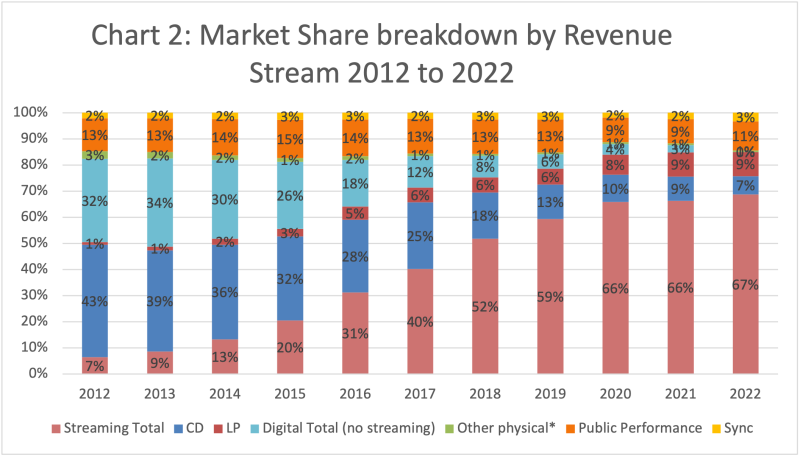Combined revenue of music labels hits its highest nominal value since 2006, buoyed by increases in streaming, vinyl sales and sync licensing.

LDProd via iStock
The combined revenue of record labels in the UK increased by 4.7% to reach £1.32 billion in 2022, according to figures released by the British Phonographic Industry (BPI) today (9 March).
The increase represents an eighth consecutive year of growth, with UK recorded music revenue now up by over a third (36%) on the amount reported five years ago.
Label revenue comprises income generated through streaming, physical purchases and digital downloads, public performance rights and music licenced to use in film, TV, games soundtracks and advertising.
READ MORE:
The BPI says this year’s growth is “in line with the trend of recent years” and represents the highest nominal value since 2006.
However, the label representative added that when this year’s figures are adjusted for inflation, the music industry still remains millions of pounds down on its peak.
BPI Chief Strategy Officer and Interim CEO Sophie Jones said 2022 was another great year for British music, but added that “we must guard against any complacency in the face of growing challenges and keep promoting and protecting the value of music”.
“The UK environment has always enabled recorded music to thrive, something we must safeguard, but now we need the music community to unite and create the impetus for further growth so that we can build on an already strong foundation to futureproof the success of British music in an increasingly competitive global music market.”
Surge in streaming
Growth in 2022 was fuelled by climbing streaming revenues, which rose 6.3% year-on-year to £885m.
Streaming now accounts for 67.2% of total industry revenue, 1% more than last year.
 Market share breakdown by revenue stream 2012 – 2022. Credit: BPI
Market share breakdown by revenue stream 2012 – 2022. Credit: BPI
The BPI says the increase was largely shaped by paid subscriptions to services such as Amazon, Apple, Spotify and YouTube, which increased by 4.8% to £762.8 million, accounting to over 85% of all income generated from streaming.
Revenue from digital downloads continued to decline as streaming consumption grew. Sales from digital downloads of tracks and albums fell by 17.5% year-on-year, generating £27.6m in total.
Income from the consumption of music on physical formats fell by 10.5% to £215.7m, which included a 23.7% drop in revenue from CD sales.
For the first time since 1987, sales of CDs (£89.5m) were dwarfed by the sale of vinyls, which saw a 3.1% increase to £119.5m.
Vinyl now accounts for more than half (55%) of the income derived from music on physical formats in the UK.
Post-Covid recovery
Revenue generated from ‘sync’ – an umbrella term for music used in film, TV, gaming, soundtracks and advertising – increased by 39% in 2022 to £42.7m.
Meanwhile, income from the public performance of music was up 23% year-on-year to stand at £143.4m.
The BPI called the growth “encouraging”, after both areas were heavily impacted by the pandemic.
Together, public performance and sync licensing accounted for 14% of the total market share in 2022, a 3% increase on last year.




